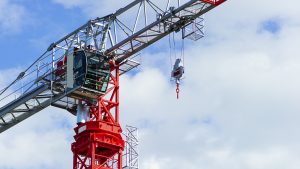Roads, water and energy are typically the main subjects of infrastructure discussion in Texas.
Airports need to be added to that list. The rapid expansion of the state’s economy in recent years has put pressure on passenger and airfreight capacity. New and expanded facilities being planned are benefitting from the federal Infrastructure Investment and Jobs Act. Nearly $3 billion has been made available to airports around the nation in 2023, with a total of $15 billion budgeted overall.
Dallas-Fort Worth International Airport (DFW) served over 73 million passengers in 2022, making it the second busiest airport in the world, and ranked fifth best in the world for overall service. Airport officials predict a record 78 million passengers will travel through DFW this year.
“We are more or less fully recovered from COVID,” DFW’s executive vice-president of global strategy and development John Ackerman told Axios. “We were fortunate enough to recover a little faster than most airports in the United States, and indeed the world for that matter, and as a result our passenger numbers last year were only about one per cent shy of our 2019 levels.”
The DFW gateway has built a reputation as one of the world’s most progressive and fastest growing airports, supporting what is in turn one of America’s most dynamic and diverse state economies.
That’s driving massive expansion at DFW. In May, airport officials announced American Airlines had signed a new 10-year Use and Lease Agreement which includes $4.8 billion in pre-approved capital investments.
Under the investment plan is an estimated $2.72 billion for the expansion of the Central Terminal Area, and updates to the 24 existing gates in Terminal C, “pier” expansions off Terminal A and Terminal C, and significant upgrades to roadways and terminal access.
Another estimated $1.63 billion will be directed to the construction of Terminal F, featuring a 15-gate concourse, the announcement said. Terminal F will provide state-of-the-art facilities and amenities, including modernized baggage handling, expanded concessions and additional passenger gates to accommodate the growing demand for air travel in and out of the state.
Construction of Terminal F is scheduled to start in the second half of 2024 and be completed by the end of 2026, according to the Dallas Morning News, while Terminal C will expand in three to four phases, with completion planned for 2028.
Adding to Texas’ airport capacity will be a $6.5 billion series of long overdue expansions at the Austin-Bergstrom Airport (AUS).
AUS set an all-time record in 2022, serving over 21 million passengers, up 55 per cent from the previous year. Projections suggest passenger numbers could exceed 30 million by 2037, according to an Austin government information sheet.
Upgrades are already underway in the Barbara Jordan Terminal, which will see added gates, new concessions and other facilities by 2026. Cargo, fuelling, baggage, passenger processing and infrastructure improvements are expected to be operational as early as this year.The Austin area has earned a reputation as one of the most vibrant tech hubs in the world, making it important for the area to deal with increased passenger volume in the future.
In fact, eight municipal and executive airports are located within 35 miles of Austin, according to the Austin Chamber of Commerce. In addition, the new Greenport International Airport, to be located 17 miles east of downtown, is planned as “the world’s first green airport to be fully sustainable off-grid, privately owned and operated.”
Elsewhere in Texas, the San Antonio International Airport will see investment of $2.5 billion, including a new terminal scheduled to enter pre-construction next year, plus road and runway upgrades, additional pad parking for aircraft, and modernization of the two existing terminals.
San Antonio is a hub for flights to various Latin American destinations but hopes to develop non-stop service to Europe in the near future. Each additional European flight could add an estimated $50 million to the region’s economy.
And at Houston’s William P. Hobby Airport, the country’s 15th busiest and ranked sixth best in the world, $450 million of upgrades await approval by Houston City Council. The funds would focus on additional gates, baggage carousels and restrooms.
The state has attracted 53 Fortune 500 companies to set up headquarters in Texas, more than any other state, according to the Governor’s Office. This makes Texas attractive for future air traffic development, for both domestic and international carriers.










Recent Comments
comments for this post are closed